
What's on this page
Volkswagen Golf 1980
The 1980 Volkswagen Golf carries a braked towing capacity of up to 1000 Kg, but check to ensure this applies to the configuration you're considering.
The Volkswagen Golf is also known as the Volkswagen Rabbit and the Volkswagen Caribe in markets outside Australia.
Volkswagen Golf Reviews
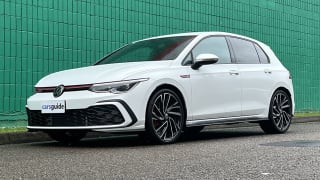
Volkswagen Golf GTI 2023 review

Volkswagen Golf R wagon 2022 review
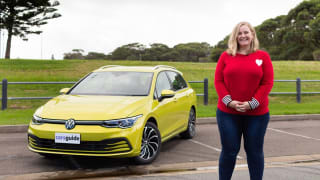
Volkswagen Golf Wagon 2022 review: 110 TSI Life

Volkswagen Golf R 2022 review
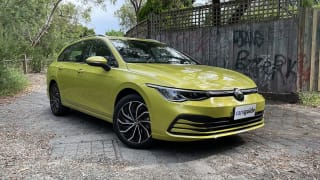
Volkswagen Golf 2022 review: 110TSI Life wagon
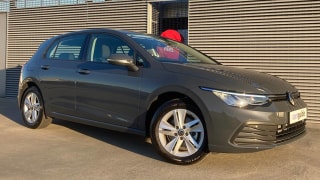
Volkswagen Golf 2022 review: 110TSI

Volkswagen Golf GTI 2021 review

Volkswagen Golf 2021 review

Volkswagen Golf 2021 review: Life snapshot

Volkswagen Golf 2021 review: R-Line snapshot
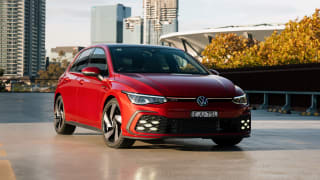
Volkswagen Golf 2021 review: GTI snapshot

Volkswagen Golf 2021 review: GTI TCR
Volkswagen Golf 1980 News
Volkswagen Golf 1980 Q&As
Check out real-world situations relating to the Volkswagen Golf here, particularly what our experts have to say about them.
-
What engine oil should I use in a 2014 Volkswagen Golf VII wagon?
The trade recommends a fully synthetic oil for either the diesel or petrol engines of the Golf Mk 7. The correct grade and specification is 5W30 which will give you maximum engine protection and performance.
The other engine-oil recommendation for this car is to not skimp on checking the oil level with the dipstick. These engines – in particular the 2.0-litre petrol unit – are designed to sip a little oil between changes, so don't be caught out with too little oil in the sump as that can cause catastrophic damage to the engine. The engine does this because it's a low-friction design, but the small amount of oil you'll use will be more than offset by the fuel savings engines designs like this can deliver.
Make it a habit to check the oil level every Saturday morning; it's a simple thing to do and something that we all once had to do in the old days when most engines burned a little oil.
Show more -
What is the ideal fuel type and tyre pressure for a Golf 118TSI Comfortline
Your recommended tyre pressures can vary a bit depending on what size wheel and tyre combination is fitted to your car. But broadly speaking, you should be looking at something like 30 or 32 psi front and rear as a good starting point. If you're moving heavy loads or driving at freeway speeds in mid-summer, a little more inflation pressure might be a good idea.
As for recommended fuel, the best advice would be to stop using ethanol-blended (E10) fuel right away. That's because there's a fair bit of confusion on the subject as it relates to Volkswagen models. The Federal Chamber of Automotive Industries tells us that all post-1986 VWs with fuel-injected engines are fine with E10. The NSW government website, however, says that E10 should not be used in VWs. Some VW owners have also been told by VW head office that E10 fuel is not suitable for their cars.
So it's confusing, but if in doubt, stick with the safe option which, for your car, would be non-ethanol fuel with an octane rating of 95 or more.
Show more -
Can you increase the tow-ball capacity of a car by uprating the rear springs or dampers?
No, the tow-ball capacity is determined by the manufacturer and is not affected by what rear suspension you have in the vehicle. Theoretically, upgrading the rear springs would mean the car would sag less when you put a load on the tow-bar, but that doesn’t alter the tow-bar’s ability to cope with extra weight.
Towing is an area where there’s a lot of misinformation doing the rounds. Make sure you know the limits dictated by the car’s manufacturer, the trailer’s manufacturer and the law.
Show more -
What type of engine oil is best for a 2014 Volkswagen Golf VII wagon?
The trade recommends a fully synthetic oil for either the diesel or petrol engines of the Golf Mk 7. The correct grade and specification is 5W30 which will give you maximum engine protection and performance.
The other engine-oil recommendation for this car is to not skimp on checking the oil level with the dipstick. These engines – in particular the 2.0-litre petrol unit – are designed to sip a little oil between changes, so don't be caught out with too little oil in the sump as that can cause catastrophic damage to the engine. The engine does this because it's a low-friction design, but the small amount of oil you'll use will be more than offset by the fuel savings engines designs like this can deliver.
Make it a habit to check the oil level every Saturday morning; it's a simple thing to do and something that we all once had to do in the old days when most engines burned a little oil.
Show more
Volkswagen Golf 1980 Dimensions
Dimensions for the 1980 Volkswagen Golf are dependent on which body type is chosen. The maximum width and height is 1610mm x 1410mm and can vary on the basis of model.

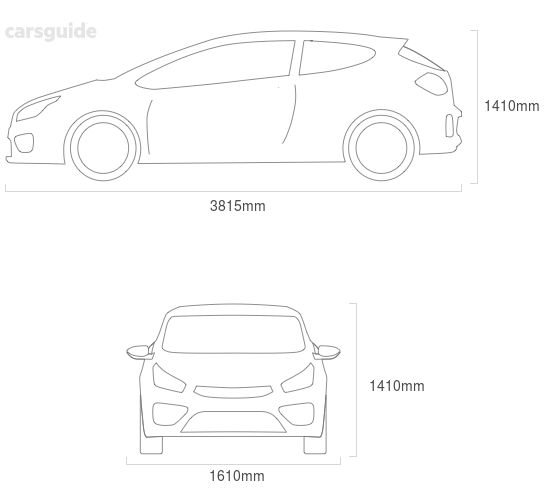
| Volkswagen Golf Model | Body Type | Height x Width x Length | Ground Clearance | |
|---|---|---|---|---|
| GLS | Hatchback | 1410x1610x3705 mm | 125 mm | |
| LS | Hatchback | 1410x1610x3705 mm | 125 mm | |
| GLD | Hatchback | 1410x1610x3815 mm | 125 mm | |
| GLS | Sedan | 1410x1610x3705 mm | 125 mm | |
Volkswagen Golf 1980 Wheel size
Wheel size for the 1980 Volkswagen Golf will vary depending on model chosen, although keep in mind that many manufacturers offer alternate wheel sizes as options on many models.The wheel size available will alter the range of tyres available to be fitted. Standard wheel sizes on the Volkswagen Golf vary from 13x4.5 inches to 13x5 inches.
| Volkswagen Golf Model | Body Type | Front Tyre Size | Front Rim | Rear Tyre Size | Rear Rim | |
|---|---|---|---|---|---|---|
| GLS | Hatchback | — | 13x5 inches | — | 13x5 inches | |
| LS | Hatchback | — | 13x5 inches | — | 13x5 inches | |
| GLD | Hatchback | — | 13x4.5 inches | — | 13x4.5 inches | |
| GLS | Sedan | — | 13x5 inches | — | 13x5 inches | |
Volkswagen Golf 1980 Fuel consumption
Fuel consumption for the 1980 Volkswagen Golf is dependent on the type of engine, transmission, or model chosen. The Volkswagen Golf currently offers fuel consumption from 5.5 to 8.5L/100km. The Volkswagen Golf is available with the following fuel types: Diesel and Leaded.
| Volkswagen Golf Model | Body Type | Specs | Fuel Consumption | |
|---|---|---|---|---|
| GLD | Hatchback | 1.5L,Diesel,4 SP MAN | 5.5L/100km | |
| GLS | Hatchback | 1.6L,Leaded,3 SP AUTO | 8.5L/100km | |
| GLS | Sedan | 1.6L,Leaded,4 SP MAN | 7.3L/100km | |
| GLS | Sedan | 1.6L,Leaded,3 SP AUTO | 8.5L/100km | |
Volkswagen Golf 1980 Towing capacity
The Volkswagen Golf’s towing capacity ranges from 800kg to 1000kg. Some models also offer heavy-duty or towing option packs which can increase towing capacity, as well as options which can hamper towing capacity. Towing capacities can vary wildly on a large number of factors. These include engine, transmission, model, and options chosen. Always check with the manufacturer or in your vehicles handbook before attempting to tow anything.
| Volkswagen Golf Model | Body Type | Specs | Braked Capacity | |
|---|---|---|---|---|
| GLS | Hatchback | 1.6L,Leaded,4 SP MAN | 1000kg | |
| LS | Hatchback | 1.6L,Leaded,4 SP MAN | 1000kg | |
| GLS | Hatchback | 1.6L,Leaded,3 SP AUTO | 1000kg | |
| GLD | Hatchback | 1.5L,Diesel,4 SP MAN | 800kg | |
| GLS | Sedan | 1.6L,Leaded,4 SP MAN | 1000kg | |
| GLS | Sedan | 1.6L,Leaded,3 SP AUTO | 1000kg | |


